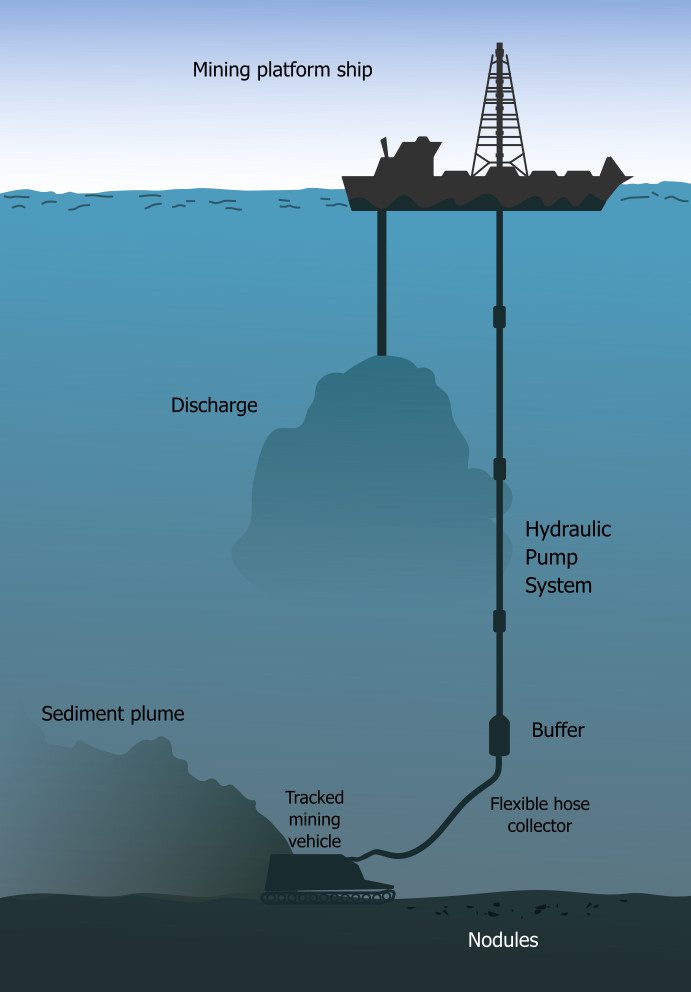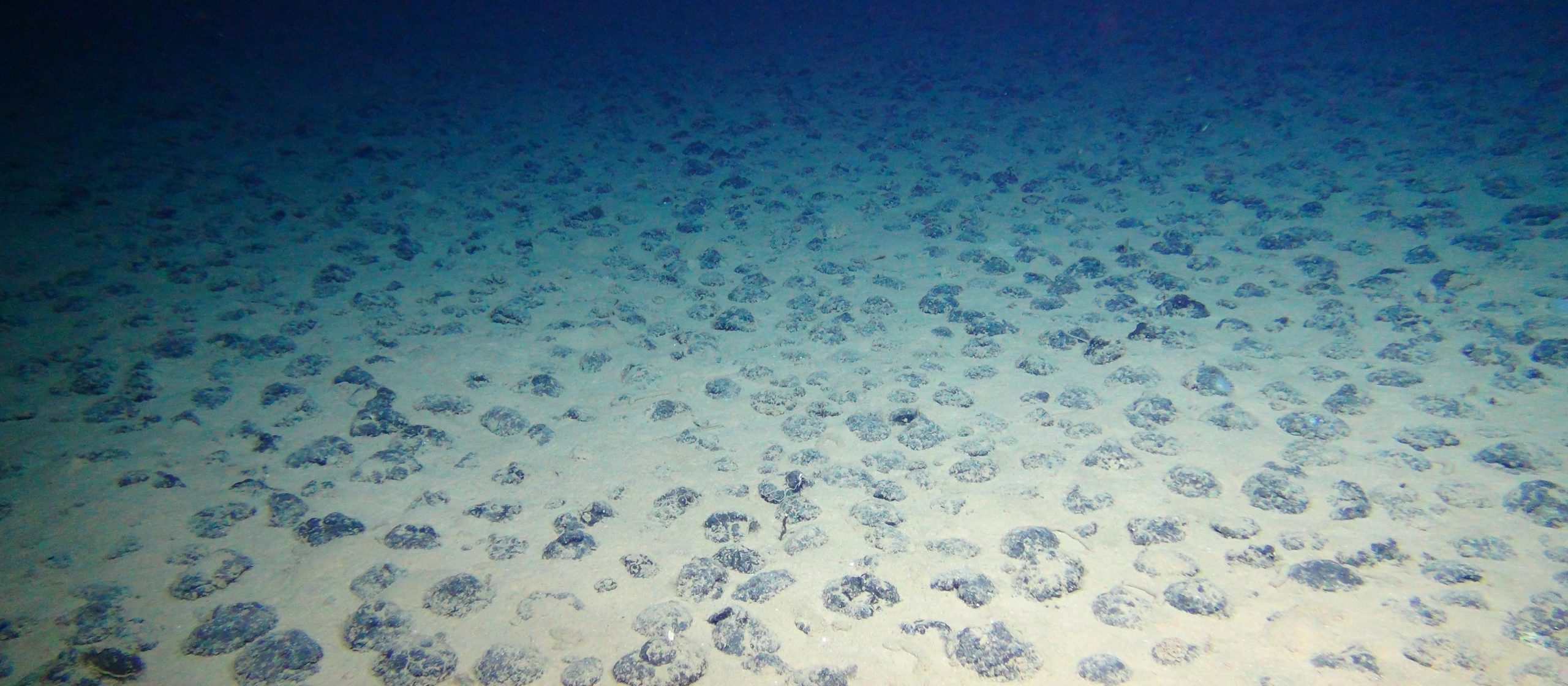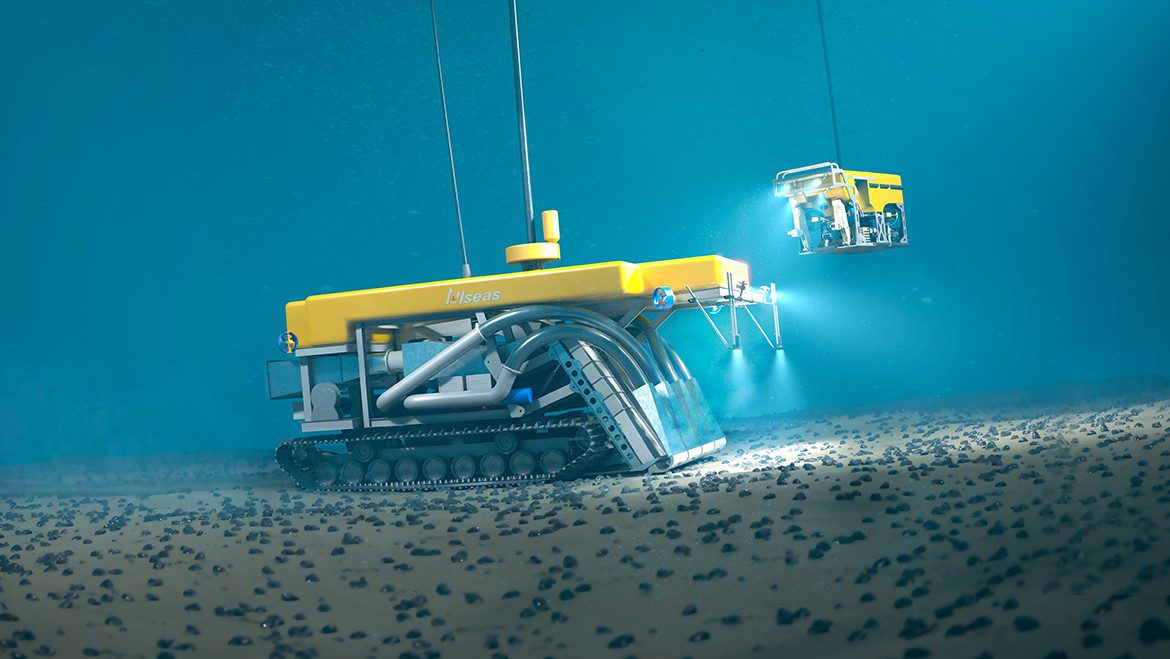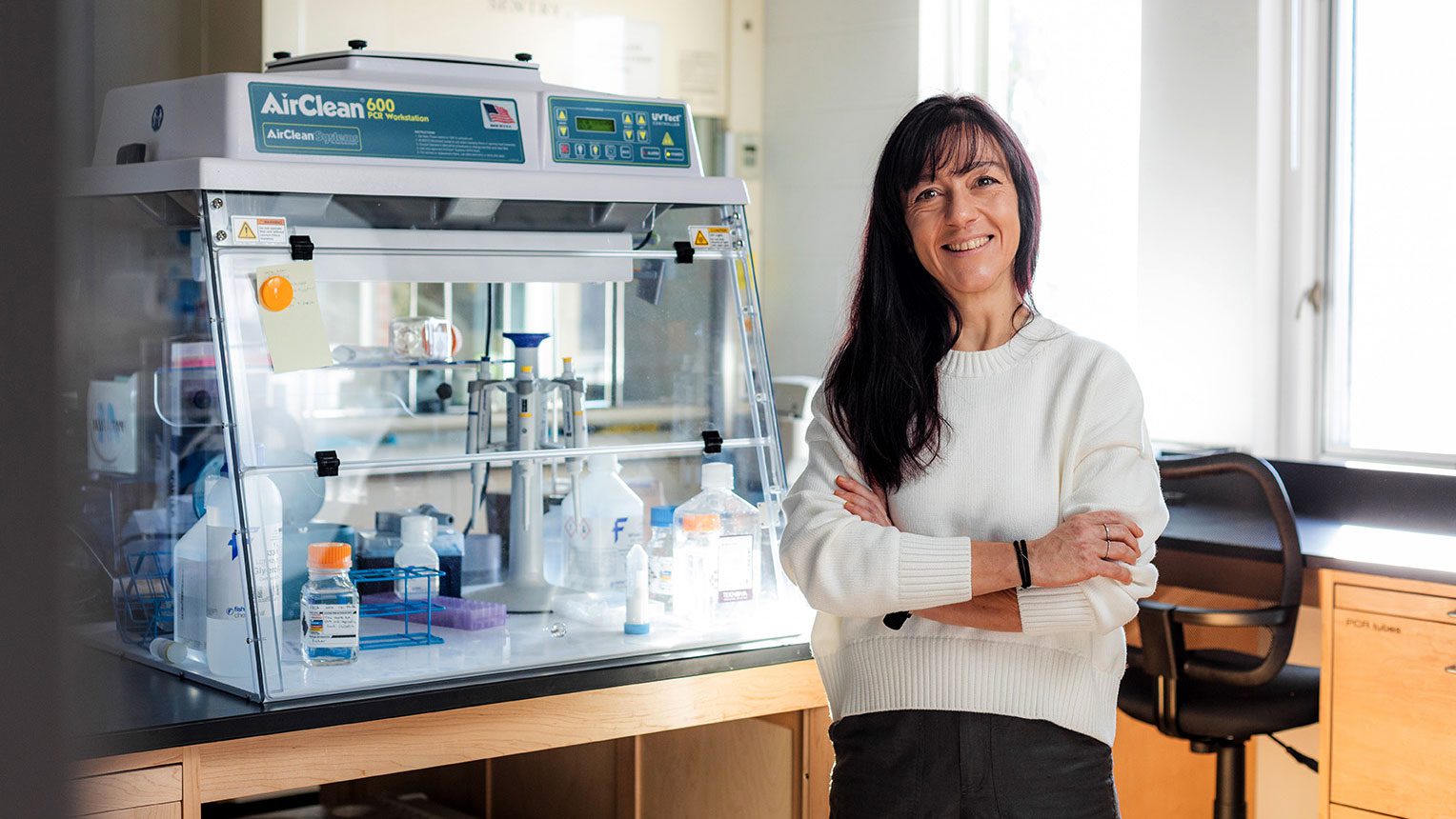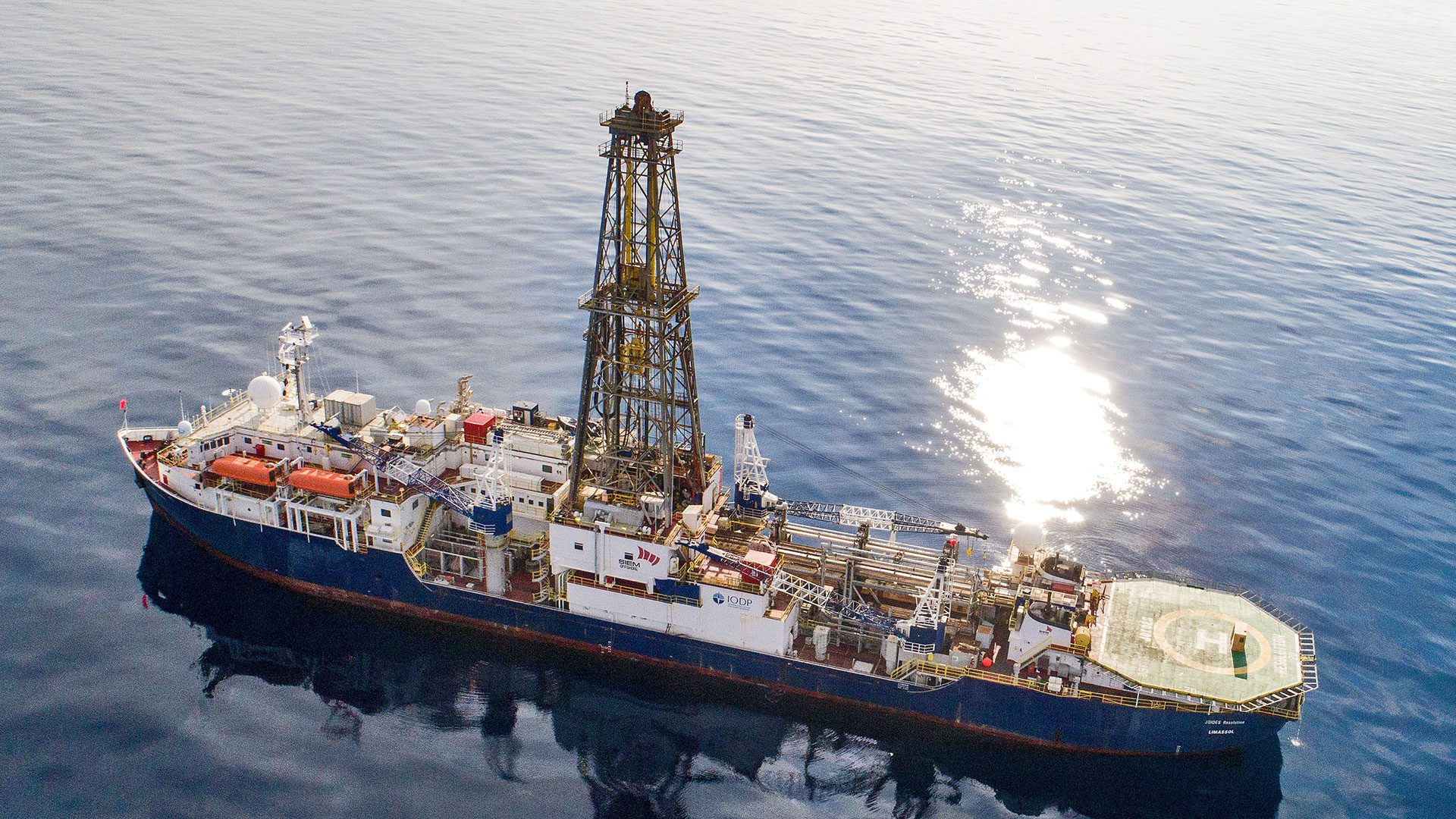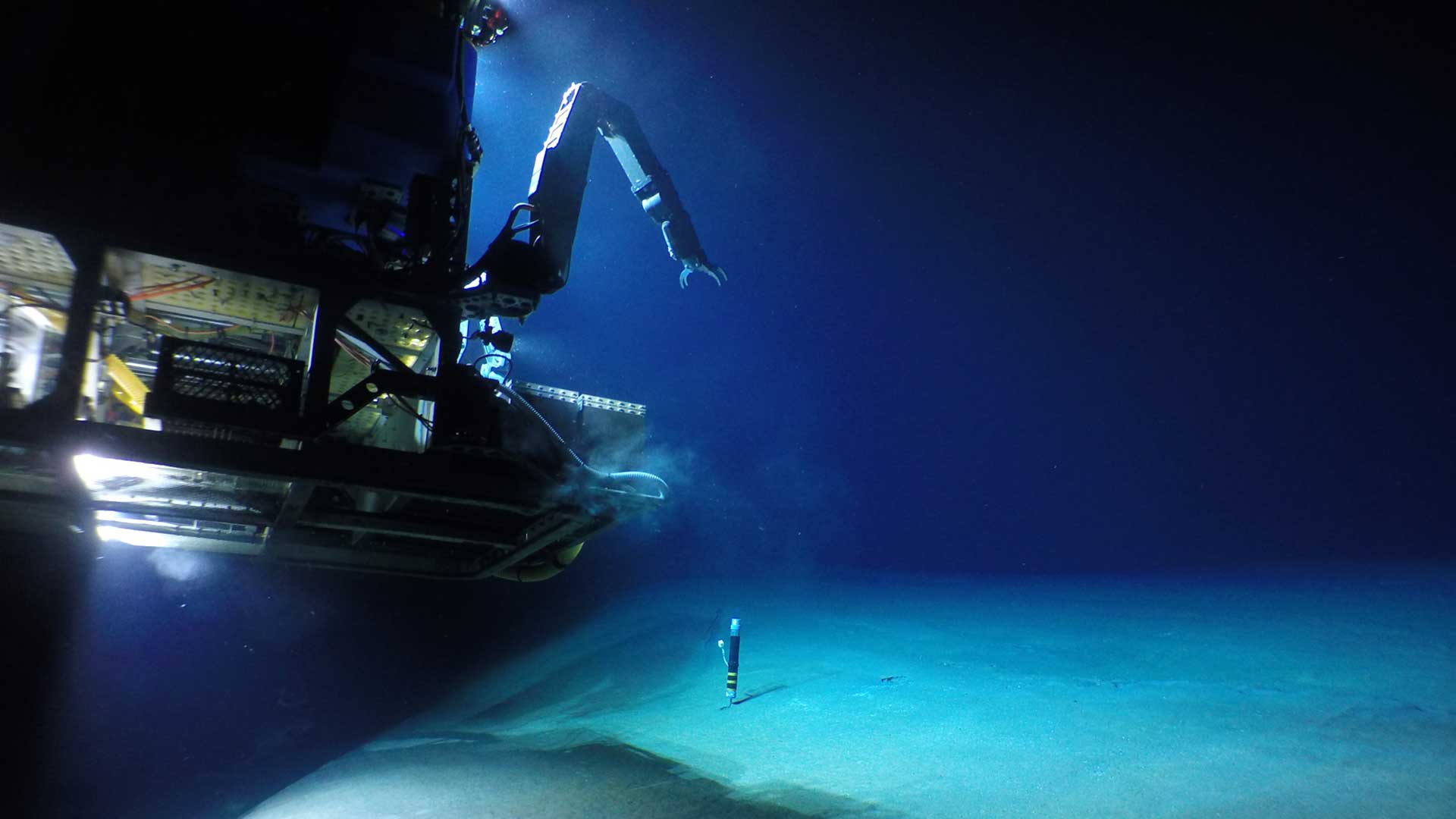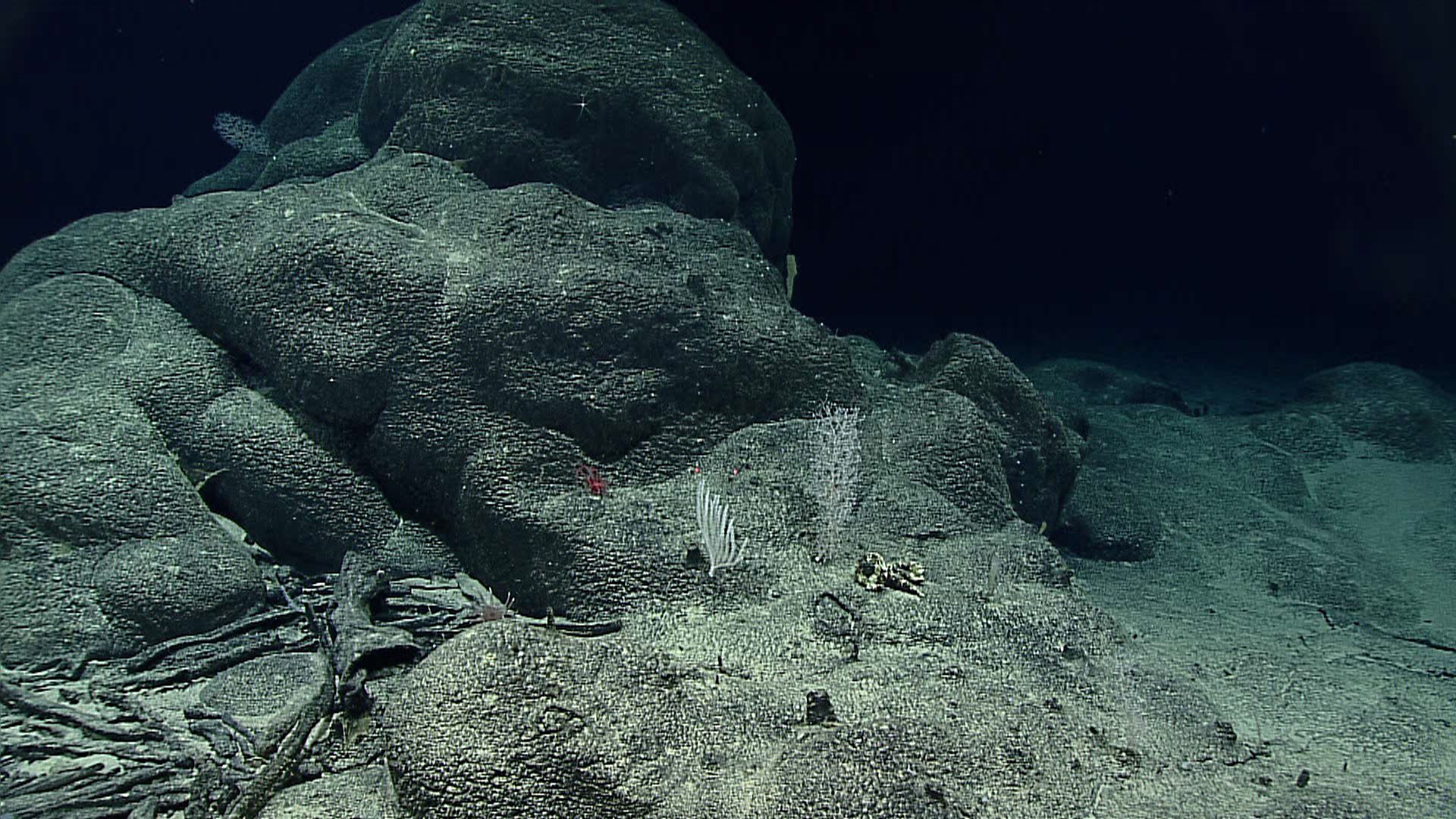
With deep-sea mining, do microbes stand a chance?
Scouring the seafloor for precious metals could put marine microbial communities and their ecosystem functions at risk
Estimated reading time: 9 minutes
They were among the first responders to the Deepwater Horizon oil spill in the Gulf of Mexico; have helped restore coral reefs in stressed ecosystems around the world; treat cancer and cure infections; form the basis of deep ocean food webs; sequester carbon and fix nitrogen; and produce about 20 percent of the oxygen in the atmosphere, making it possible for humans (and most other life forms) to live on this planet.
They are marine microbes, and they are some of Earth’s most important yet understudied residents that live throughout the global ocean.
Now, as industrial developments move into even deeper and more remote regions of the ocean, activities such as deep-sea mining could put many marine microbial communities and their critical ecosystem functions at risk. This is especially worrisome given the vast repository of knowledge and information they hold, and ocean ecosystem services they provide.
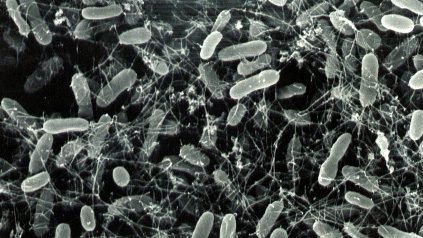
Scanning electron micrograph of a deep-sea microbe fondly named “Snot Bug” from the underwater volcano Axial Seamount, located about 300 miles (482 kilometers) off the coast of Oregon. (Photo courtesy of Julie Huber, © Woods Hole Oceanographic Institution)
“Microbes are the hidden heroes of our planet,” said Julie Huber, an oceanographer at Woods Hole Oceanographic Institution who studies marine chemistry and geochemistry, and was an author on a paper about the impacts of deep-sea mining on microbial ecosystem services. “They are doing all of these important things to keep the planet healthy, and when we think about these types of disruptions, we’re not just talking about killing microbes, we are removing their ability to do their job.”
Critical ecosystem services
One of these jobs is nutrient cycling. In the deep, there’s no sunlight and thus no opportunity for photosynthesis, so microbes instead feed themselves with leftover organic carbon raining down from the surface or dissolved minerals in the water, building body mass and extracting energy from carbon dioxide, sulfur, nitrogen, or other nutrients. As a result of their hard work, the food web can start to build up with fresh organic matter that protists can eat, and things grow from there.
“These systems are hotspots of fauna because you have primary producers,” said Maria Pachiadaki, a microbial ecologist at WHOI, who was a co-author on the microbial ecosystem services paper. “In such dark environments, they cannot produce as much organic matter as photosynthesis, but in comparison with the majority of the ocean floor they are very, very productive ecosystems.”
This nutrient cycling is not just crucial to the food web; it may also play an important role in carbon sequestration. Estimates vary on whether the microbes themselves capture a lot of carbon, but even if they don’t, they are the foundation of the marine processes, like photosynthesis, that store much of the excess carbon dioxide that human activities have released into the atmosphere. The global ocean has absorbed about 40 percent of all excess greenhouse gas emissions from burning fossil fuels and about 90 percent of the excess heat.
If deep-sea mining takes place, it could interrupt the carbon sequestration cycle and it would not be limited to just one part of the global ocean. There are four main types of significant mineral deposits that are being considered or explored for mining on ocean floors around the world: polymetallic nodule fields, active hydrothermal vents, inactive vents, and cobalt crusts. The different types of metals vary from site to site, but in general, they contain elements such as cobalt, copper, and nickel that are currently required for the transition from a fossil fuel-powered world to an electrified one. These metals, along with rare earth materials, are currently necessary for lithium-ion batteries, which power everything from electric car batteries to smartphones.
Unknown consequences
Dr. Huber said she is concerned about the prospect of large-scale and intensive mining operations taking place in the deep before scientists know what these ecosystems need to function or fully understand the many and complex services these organisms provide the deep ocean, and, by extension, all of us.
As deep-sea mining edges from the realm of science fiction towards reality, scientists have warned about the possible consequences to marine animals: how sediment plumes might smother them; how mining waste dumped at the surface level might interrupt photosynthesis; and how ocean noise might deafen and disturb larger marine animals like whales and dolphins that rely on echolocation.
Despite their importance to a healthy ocean, the threats posed to microbes by mining have been less well studied and less fretted over by those expressing concern about ocean industrialization.
The race for resources
Seabed mining in international waters is governed by the International Seabed Authority (ISA), a little-known United Nations agency based in Jamaica, that was established as part of the U.N. Convention on the Law of the Sea in 1982. The agency, composed of 167-member states plus the European Union (but not the United States), is responsible for establishing a code for mining, and protecting the marine environment from any of the harmful effects that may ensue. So far, the ISA has granted a total of 31 exploration contracts for mining in the deep sea, with nineteen of them in the polymetallic nodule fields in the Clarion Clipperton Zone (CCZ), an expanse of the Pacific Ocean stretching from near Hawaii towards the coast of Mexico, and spanning about 1.7 million square miles.
The nodule fields are thought to contain the most accessible metals, since the nodules lie on the ocean floor. Mining companies, and those eager to see extraction begin, argue that this means the nodules, which are grapefruit-sized, rock-like formations that have accreted over millions of years, usually around a piece of organic debris like a shark’s tooth, could easily be scooped up and brought to the surface.
In June 2021, Nauru, the Pacific Island nation, informed the ISA that it was invoking the so-called two-year rule: from that date, the agency would have to consider any application for deep-sea mining in the CCZ, under whatever regulations are on the books at the time. The ISA began developing regulations in 2014, but the mining code still only exists in draft form.
In response to Nauru’s triggering of the two-year rule in 2021, more than 700 scientists and marine policy experts signed a statement urging a moratorium on deep-sea mining, arguing that mining will cause a “loss of biodiversity and ecosystem functioning that would be irreversible on multi-generational timescales.”
Now, several countries, such as New Zealand, France, and many Pacific Island nations have also called for a moratorium, and car companies like BMW and Volvo, which have also advocated for caution, have said they will not source metals from the deep ocean, for now. In January, state legislators in Hawaii, about 500 miles from the CCZ, introduced a bill to prohibit seabed mining and all related activities in state waters.
Irreparable damage possible
Removing the microbes, which deep-sea mining would inevitably do – either by direct removal or by substantially altering the narrow range of conditions they can survive in – would not be temporary. Given the lack of light, the relatively small influx of nutrients (compared to the surface ocean), the sluggish circulation of currents, and the cold temperatures, life moves slowly in the deep ocean. Studies have found that the microbial communities are different on the nodules, the sediments they lie atop, and the water they’re in contact with, an indication of the complexity of these ecosystems.
Emma Wear, a marine microbial biologist at Lewis and Clark University who co-authored a study on the bacterial and archaeal communities in the western CCZ, said, “In my mind, some of the open questions are, ‘Why do the nodules have a unique bacterial and archaeal community? Why are the microbes different? If you remove the microbes, is that removing some sort of key metabolic function?’”
“Those are hard questions to answer but they are some of the most important ones when we are thinking about the impacts of mining,” she said.
In 2020, a group of scientists published a landmark study on the effects of a deep-sea mining experiment 26 years ago on microbial communities and functions. The original experiment plowed an area of about 7 square miles in the Peru Basin nodule field in 1989 to simulate mining. Over time, scientists have returned to the site to measure its recovery.
Scientists revisited the area in 2015 as part of the study and found that not only were the decades-old plough tracks still visible, but that microbial activity was four times less in the disturbed area compared to an untouched area. And, microbial cell numbers were reduced by about 30 percent in the tracks.
They also made fresh tracks, about 5 weeks before the period of the study, to compare them to baseline and to the old tracks. In the new tracks, about half of the cells had disappeared. Those findings suggest that, even assuming the lowest bacterial population growth, the abundance of microbes should have recovered in the affected area within two to ten years. Instead, they estimate, it would take at least 50 years for this ecosystem, in which mining was merely simulated, and not on an industrial scale, to begin to recover its microbial communities.
“When I think about it after reading the paper, it might have been expected, but it’s mind-boggling,” Dr. Pachiadaki said. “Nodules are not a renewable resource, and the microbes are going so slowly that we cannot expect these areas to recover.”
Restoration in these areas would likely be expensive, difficult, and nearly impossible to track, because of the relative inaccessibility. As scientists have noted in papers and elsewhere, ecosystem restoration is difficult even in well-studied, accessible areas like seagrass beds and coral reefs.
Worth the environmental costs?
It is unclear how much metal there really is at the bottom of the ocean, if it ever becomes technologically and financially feasible to get it: some estimates suggest that there are about 30 million tons of copper and zinc at known active and inactive vent sites globally. Land-based mining, which presents its own problems, yields 19 million tons of copper and 12 million tons of zinc annually.
While the minerals in these deep-sea ecosystems may hold material, metallic value for people, focusing on what is bright and shiny might cause would-be miners and stakeholders to discard other treasures the deep ocean might yield. Scientists have already discovered genetic resources that improve ethanol production, and identified organisms that can treat cancer, or improve organ transplant and preservation.
Dr. Huber and Dr. Pachiadaki both expressed hope that better battery recycling and reuse of the metals we have already mined, or batteries that don’t require metals at all, would obviate the need for more mining in the sea or on land, which both said has been catastrophic.
Dr. Pachiadaki said this moment is an opportunity to do things differently, to learn from the past: “We need to learn from the mistakes that humanity has made in terrestrial mining so we don’t cause extensive or irreparable damage to the oceans,” she said.

